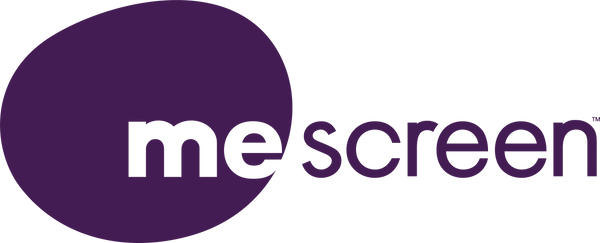Supplement Smart: The mescreen™ Series for Personalized Mitochondrial Health
🔬 NMN vs NR: What’s the Difference, and Why It Matters for Cellular Aging
In recent years, the anti-aging and longevity space has been buzzing about NAD+ boosters, specifically NMN (Nicotinamide Mononucleotide) and NR (Nicotinamide Riboside). Both are precursors to NAD+ (nicotinamide adenine dinucleotide), a critical molecule that fuels mitochondrial function, DNA repair, and healthy aging.
But which one is more effective? Are NMN and NR the same? And how do they really work inside your body?
Let’s break down the science behind these two popular supplements and explore how NMN is different from NR, so you can make an informed decision for your cellular health.
🧬 Why NAD+ Is So Important
Before diving into NMN and NR, it helps to understand NAD+. This molecule is found in every living cell and is essential for:
- Mitochondrial energy production (via oxidative phosphorylation)
- Activation of sirtuins (longevity-related proteins)
- DNA repair via PARP enzymes
- Circadian rhythm regulation
- Cellular stress resistance
Unfortunately, NAD+ levels decline with age, stress, poor sleep, and metabolic dysfunction, which may contribute to fatigue, cognitive decline, and accelerated aging.
This is where NMN and NR come in, as NAD+ precursors.
⚗️ What Is NMN?
Nicotinamide Mononucleotide (NMN) is a molecule naturally found in the body and in small amounts in certain foods like broccoli, cabbage, and edamame. It is one step away from becoming NAD+, meaning your cells can convert NMN directly into NAD+ through the enzyme NMNAT (Nicotinamide mononucleotide adenylyltransferase).
Key Functions of NMN:
- Increases intracellular NAD+ levels
- Enhances mitochondrial function
- Activates sirtuins (SIRT1, SIRT3)
- Improves insulin sensitivity and vascular health in animal studies
- May cross the blood-brain barrier through a newly identified transporter (Slc12a8)
💊 What Is NR?
Nicotinamide Riboside (NR) is another NAD+ precursor that is also found in trace amounts in milk and yeast. Once ingested, NR is converted into NMN inside the body before finally becoming NAD+. So it follows this pathway:
NR → NMN → NAD+
NR has been studied in several human trials and is generally well tolerated.
🔍 NMN vs NR: Key Differences
| Feature | NMN | NR |
|---|---|---|
| Chemical Structure | Nucleotide (has a phosphate group) | Nucleoside (no phosphate) |
| Conversion Pathway | Converts directly to NAD+ | Must first convert to NMN, then to NAD+ |
| Bioavailability | Emerging evidence of bioavailability via transporters (Slc12a8) | Bioavailable but may degrade in the gut |
| Research Focus | Primarily studied in animal models, with growing human trials | More human trials to date, especially in metabolic health |
| Target Effects | Energy, endurance, cognition, insulin sensitivity | Metabolic health, brain health, muscle function |
🧠 Does NMN Cross the Blood-Brain Barrier?
There has been debate around NMN’s ability to cross the blood-brain barrier (BBB), but a 2019 study identified a specific transporter protein (Slc12a8) that facilitates NMN uptake in the small intestine and potentially into the brain.
This suggests NMN may be effective in supporting neurological health and cognitive function, though more human data is needed.
⚠️ Safety and Considerations
Both NMN and NR have been shown to be well tolerated in studies. However:
- NR is classified as Generally Recognized As Safe (GRAS) by the FDA.
- NMN is not currently GRAS, but is gaining regulatory traction in some regions.
Always consult your healthcare provider before starting NAD+ boosters.
🔬 Which One Should You Choose?
It depends on your goals:
- Choose NR if you want a supplement with more human data and FDA-recognized safety.
- Choose NMN if you prefer potentially faster conversion to NAD+ and support for vascular or neurological health.
- Some people combine both for comprehensive support, though this hasn’t been extensively studied.
🌟 Final Thoughts
Both NMN and NR offer powerful ways to support cellular energy, healthy aging, and mitochondrial function by restoring NAD+ levels.
While NMN is one step closer to NAD+ and shows promising bioavailability, NR currently holds more clinical data in humans. Whichever you choose, optimizing NAD+ may be one of the most exciting frontiers in age-related health.
🔍 Want to know how your NAD+ and mitochondrial pathways are functioning?
mescreen™ offers advanced biomarker testing to assess your cellular energy status and NAD+ metabolism.
👉 Explore your cellular health at mescreen.com
📚 References
- Mills, K. F., et al. (2016). Long-Term Administration of Nicotinamide Mononucleotide Mitigates Age-Associated Physiological Decline in Mice. Cell Metabolism, 24(6), 795–806. Link
- Imai, S., & Guarente, L. (2016). NAD+ and sirtuins in aging and disease. Trends in Cell Biology, 26(8), 554–565. Link
- Trammell, S. A. J., et al. (2016). Nicotinamide riboside is uniquely and orally bioavailable in mice and humans. Nature Communications, 7, 12948. Link
- Grozio, A., et al. (2019). Slc12a8 is a nicotinamide mononucleotide transporter. Nature Metabolism, 1(1), 47–57. Link
- Airhart, S. E., et al. (2017). An open-label study of nicotinamide riboside pharmacokinetics. PLoS ONE, 12(12), e0186459. Link
- Yoshino, M., et al. (2021). Nicotinamide mononucleotide increases muscle insulin sensitivity in prediabetic women. Science, 372(6547), 1224–1229. Link
- Rajman, L., et al. (2018). Therapeutic potential of NAD+ precursors in age-related and metabolic diseases. Cell Metabolism, 27(3), 529–547. Link

